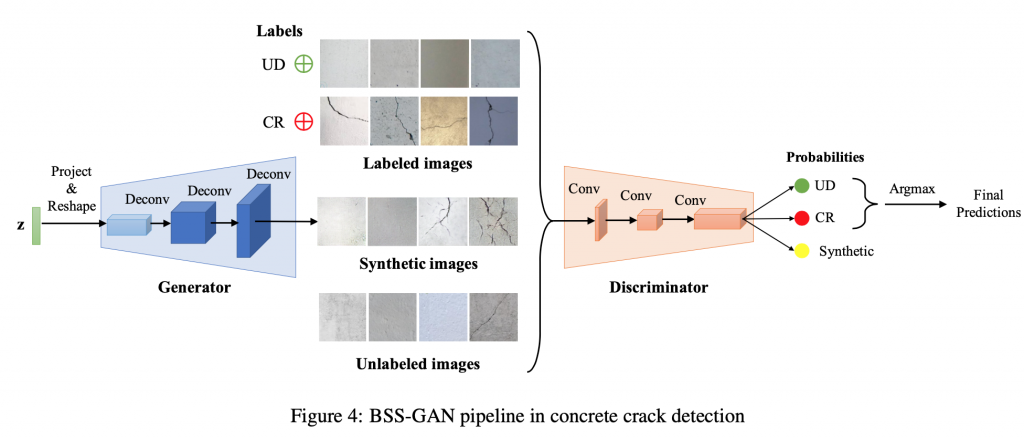
This project is led by Prof. Mosalam (UC Berkeley CEE Department and head of Pacific Earthquake Engineering Research Center). Co-authors are Yuqing Gao, Ph.D. and Pengyuan (Bill) Zhai. This is my first GAN research with PEER. In this study, we aim to address the low-data and imbalanced-class issues faced by many vision-based Structural Health Monitoring (SHM) applications. We introduced a variant of semi-supervised Generative Adversarial Network (GAN), named the BSSGAN (Balanced-batch Semi-supervised GAN), which outperformed traditional CNN baselines, traditional CNN with GAN-based data augmentation methods, etc.
Our paper is titled “Balanced Semi-supervised Generative Adversarial Network in Vision-based Structural Damage Assessment under the Low-data and Imbalanced-class Regime.”
Journal Paper Link: /wp-content/uploads/2021/02/Balanced_Semi_supervised_GAN__Submit_to_CACIAE.pdf
Abstract: In recent years, deep learning (DL) with convolutional neural networks (CNN) to assess structural damages has gained growing popularity in vision-based structural health monitoring (SHM). Most of the current DL applications in SHM belong to the supervised learning category, e.g., image-based damage classification and localization, which usually relies on large amounts of labeled data to be accurate. However, large-scale image data acquisition and annotation processes are often costly in SHM. Moreover, the collected structural image datasets are usually highly imbalanced in practice, because images of damaged structures/components, e.g., a cracked concrete slab or a column with cover spalling, are far rarer than those of intact structures. Hence, both data deficiency and class-imbalance hinder the training efficiency. Common mitigation strategies in- clude transfer learning (TL), over-sampling by conventional data augmentation (DA), and under-sampling, yet these ad- hoc methods only provide limited performance boost that varies case by case. Generative Adversarial Network (GAN) is considered as an alternative to relieve the low-data and imbalanced-class issues by utilizing “synthetic” images that capture class-specific features to improve the classifier. In this work, we introduce one variant of GAN, named the Bal- anced Semi-supervised GAN (BSS-GAN), which adopts the semi-supervised learning concept and uses the balanced- batch sampling technique in training. A series of computer experiments on concrete cracking and spalling classification were conducted under low-data and imbalanced-class regime with limited computing power. The results show that the BSS-GAN is able to achieve higher damage detection performance (in terms of recall and F-beta score) than other conventional pipelines, indicating its state-of-the-art performance.